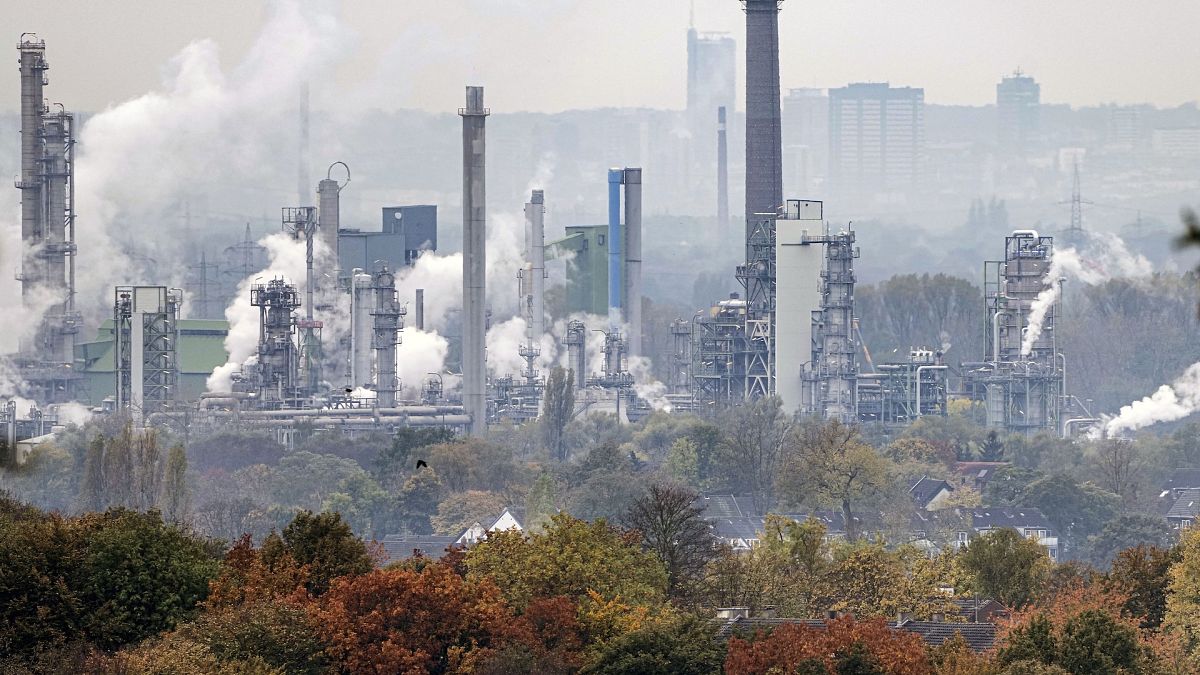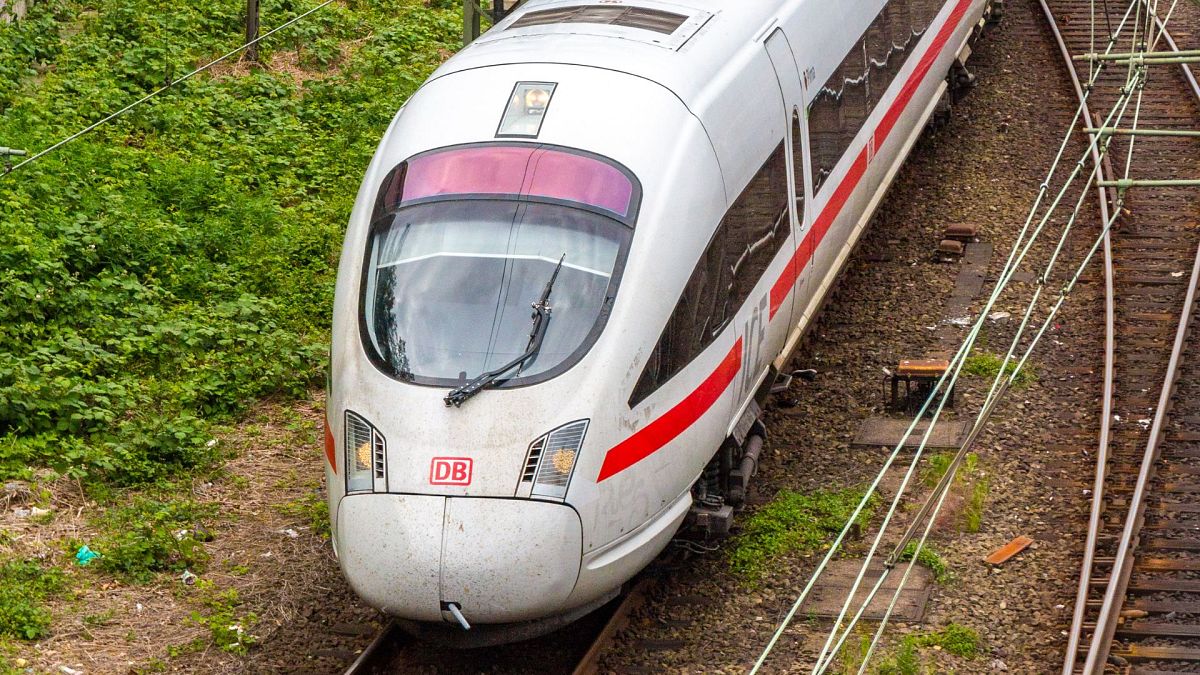Five major economic hurdles Germany needs to overcome in 2025

Germany is set to face a tough 2025 with stagnating growth, fiscal uncertainty, geopolitical risks, high energy costs, and a weakening automotive sector. Without reforms to unlock structural investments and bolster competitiveness, Europe’s largest economy risks prolonged malaise.
Germany’s economy, once considered the powerhouse of Europe, is now navigating an era of stagnation and structural challenges.
With growth projections among the weakest in the developed world, the country faces significant hurdles in 2025, ranging from economic stagnation and geopolitical tensions to the need for a strategic overhaul in key sectors.
Here are the top five challenges with which the German economy will have to contend.
1. Economic stagnation and persistent underperformance
The German economy has seen virtually no growth since late 2019.
Growth projections for 2025 remain bleak, with real GDP expected to expand by a mere 0.3%, according to Goldman Sachs. The Bundesbank projects an even more tepid 0.2% increase, while the Kiel Institute forecasts outright stagnation at 0.0%.
Underlying this stagnation is a confluence of weak exports, sluggish private consumption, and faltering investments.
Decarbonisation, digitalisation, and demographic shifts are exerting downward pressure on potential output, leaving analysts questioning whether Germany’s malaise is a temporary weakness or a structural adjustment.
Professor Timo Wollmershäuser from the ifo Institute recently noted: “At the moment, it is not yet clear whether the current phase of stagnation is a temporary weakness or one that is permanent and hence a painful change in the economy.”
2. Elections and fiscal uncertainty
Germany’s early federal elections, scheduled for February 2025, bring heightened economic and political uncertainty.
Investors are watching closely to see if a new government will leverage Germany’s substantial fiscal capacity to stimulate growth.
Despite Germany’s substantial fiscal capacity, with one of the lowest debt-to-GDP ratios among major advanced economies, the constitutional “debt brake” limits public borrowing.
Yet, there is scepticism about whether the political will exists to tap into this potential.
While the escape clause could permit immediate stimulus, a permanent removal of the debt brake – essential to unlocking sustained long-term investments – is widely regarded as unlikely.
Analysts warn that unless a new government adopts pro-growth reforms, such as tax incentives and infrastructure spending, Germany risks falling further behind its European neighbours.
The Bundesbank underscored this urgency, stating that “fiscal policy is set to be restrictive this year and in the next two years”.
The Kiel Institute also highlighted that uncertainty from the elections has already dented business confidence, further delaying investment decisions.
3. Loss of competitiveness in the automotive industry
Germany’s automotive sector, a key pillar of its economy, continues to lose global competitiveness.
Once dominant players like Volkswagen, BMW, and Mercedes-Benz have steadily lost market share to US and Chinese manufacturers.
According to Goldman Sachs: “China has evolved from Germany’s key export market to a main competitor”, particularly in sectors like electric vehicles where German car makers lag behind.
Germany’s trade relationships with China have shifted dramatically.
As the Bundesbank noted: “Disappointing growth in China- together with a tilt from industrial to domestic activity- has weighed on the demand for Germany’s products and lowered German exports to China.”
Exports of German automobiles have been further hit by high energy costs and trade policy uncertainty.
As the Kiel Institute stated: “The automotive sector has been gloomy for six months, reflecting structural changes and falling export competitiveness.”
4. Geopolitical risks: trade tensions and protectionism
Germany’s export-driven economy remains vulnerable to rising global protectionism, particularly from the United States.
The incoming Trump administration’s trade policies are expected to have a disproportionately negative impact on Germany.
“While the size of any US tariffs is highly uncertain, our work suggests that much of the growth drag is likely to come from higher trade policy uncertainty”, warned Goldman Sachs in a recent note.
The Kiel Institute estimates that tariffs imposed by the incoming Trump administration could reduce Germany’s GDP by 0.6% in a baseline scenario and by as much as 1.2% in a downside scenario involving broader tariffs on EU goods.
“Germany’s weak potential growth is coming to light, and any unforeseen external disruptive factor can make the difference between a plus or a minus in economic output,” said Moritz Schularick, President of the Kiel Institute.
This uncertainty has already led to a sharp decline in business confidence. Export expectations for 2025, as measured by the ifo Institute, have fallen to their lowest levels in years.
The trade outlook is particularly bleak for the automotive and metal industries, which have historically formed the backbone of Germany’s export economy.
5. Rising energy costs and inflationary pressures
High energy prices remain a persistent burden for German businesses and households.
The Bundesbank reported that industrial production in energy-intensive sectors has contracted by 10-15% due to elevated gas and electricity costs, with little scope for recovery in 2025.
Germany’s decision to phase out nuclear energy has compounded this challenge, leaving the country reliant on costlier and less predictable energy sources.
Additionally, Germany’s high energy costs exacerbate the challenges facing energy-intensive industries like automotive manufacturing, shrinking margins and prompting some producers to consider relocating operations abroad.
Inflation, although declining from its 2022 peak, remains stubbornly high compared to pre-pandemic levels.
The Harmonised Index of Consumer Prices (HICP) is projected to drop only marginally to 2.4% in 2025, weighed down by persistently high service costs and a slower-than-expected recovery in wage dynamics.
A bleak outlook with limited upside scenarios
A more optimistic scenario hinges on decisive reforms to reduce corporate tax burdens, expand infrastructure, and address Germany’s labour shortages through immigration and workforce participation policies.
Without these measures, structural stagnation could continue to weigh on the country’s growth prospects well beyond 2025.
As the Bundesbank President’s Joachim Nagel recently indicated: “An economic recovery is yet to materialise. The German economy is not only struggling with persistent economic headwinds, but also with structural problems.”
For now, the prospects for Europe’s largest economy appear constrained by a combination of cyclical and structural forces that show no signs of abating.
Source: Euro News















